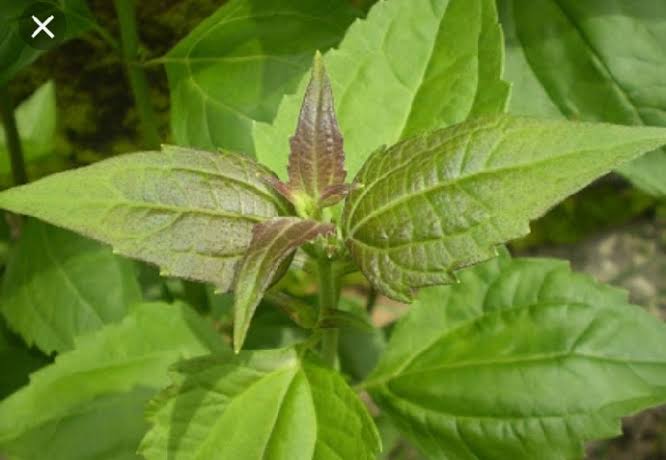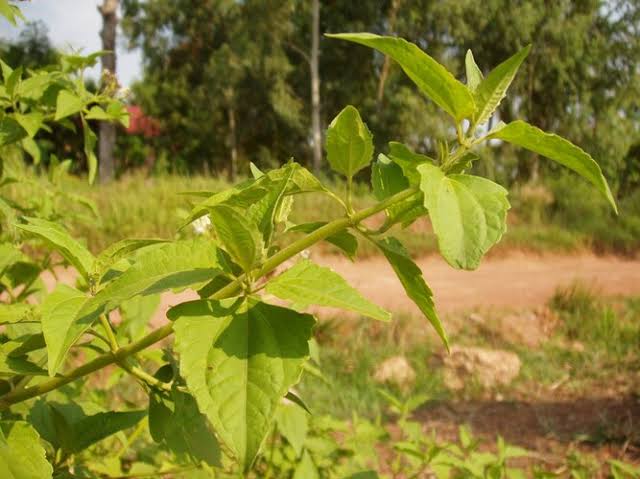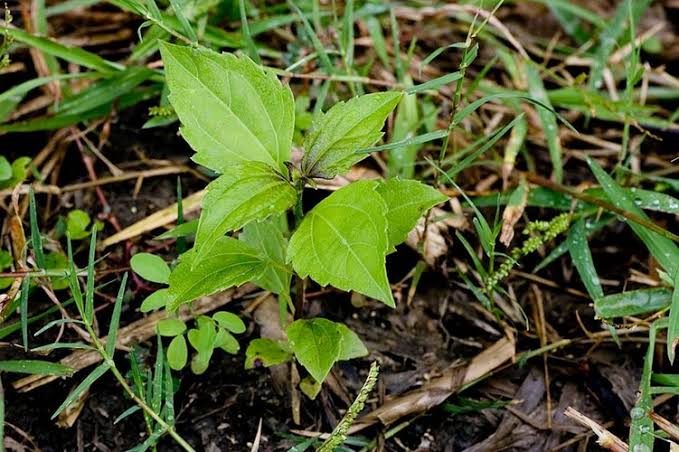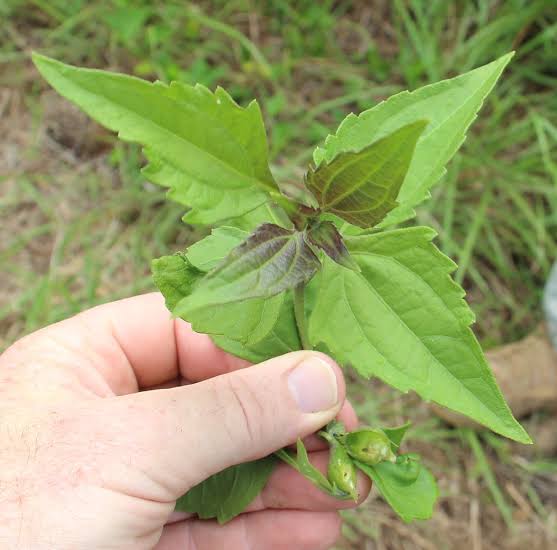Independent leaf, scientifically known as Vernonia amygdalina, is a remarkable plant that holds significant cultural, nutritional, and medicinal value in various parts of the world, particularly in Africa.
Commonly referred to as bitter leaf, it is widely recognized for its distinctive bitter taste, which has made it a staple in traditional cuisine and herbal medicine. This leafy vegetable is not only appreciated for its flavor but also for its rich array of nutrients and potential health benefits.
Originating from tropical and subtropical regions, independent leaf is often found growing in the wild, yet it is cultivated in home gardens and farms due to its numerous advantages. The plant thrives in well-drained soils and can be propagated easily from cuttings.
Its resilience and adaptability to various environmental conditions contribute to its widespread cultivation across different countries, especially in Nigeria, where it is a common ingredient in soups and stews.
The leaves of the independent leaf plant are typically harvested while still young and tender, providing an optimal blend of taste and nutritional value. Nutritionally, independent leaf is a powerhouse of essential vitamins and minerals. It is particularly high in vitamins A, C, and E, which play crucial roles in maintaining overall health.
Vitamin A is vital for maintaining healthy vision and immune function, while vitamin C is an antioxidant that supports the immune system and promotes skin health. Vitamin E, another potent antioxidant, is known for its protective effects on cells and its role in skin health.
In addition to these vitamins, independent leaf is a good source of essential minerals such as calcium, iron, and potassium. Calcium is important for bone health, iron is crucial for the formation of red blood cells, and potassium helps regulate blood pressure and fluid balance in the body.
Independent leaf is also rich in dietary fiber, which is essential for digestive health. Consuming a diet high in fiber can aid in preventing constipation, promoting a healthy gut, and potentially reducing the risk of chronic diseases such as heart disease and diabetes.
The fiber content in this leafy green makes it an excellent addition to meals, as it contributes to satiety and helps maintain a healthy weight. Beyond its nutritional value, independent leaf is renowned for its medicinal properties.
Traditional medicine practitioners have utilized the leaves in various forms, such as teas, extracts, and poultices, to address a range of health issues. The plant is believed to possess anti-inflammatory, antibacterial, and antifungal properties, making it useful in treating infections and inflammatory conditions.
It is often used in the management of gastrointestinal disorders, as it is thought to help alleviate symptoms of dysentery and diarrhea. In addition to its use in traditional remedies, modern research has begun to explore the potential health benefits of independent leaf.
Studies have suggested that the leaves may have hypoglycemic properties, which could be beneficial for individuals with diabetes. The consumption of independent leaf has been linked to improved blood sugar levels and enhanced insulin sensitivity, although more research is needed to fully understand its effects and mechanisms.
Another area of interest is the potential anticancer properties of independent leaf. Preliminary studies have indicated that extracts from the leaves may inhibit the growth of certain cancer cells, suggesting that this plant could play a role in cancer prevention and treatment.
However, while these findings are promising, further scientific investigations are necessary to establish the efficacy and safety of independent leaf in cancer therapy. In culinary applications, independent leaf is highly valued for its unique flavor and versatility.
It is commonly used in traditional dishes, where its bitterness is balanced with other ingredients to create delicious meals. The leaves can be added to soups, stews, and sauces, imparting a distinctive taste while enhancing the nutritional profile of the dish.
In some cultures, the leaves are also used as a wrapping for various fillings, showcasing their culinary flexibility. The preparation of independent leaf typically involves washing and cooking the leaves to reduce their bitterness.
This process not only makes the leaves more palatable but also helps to retain their nutritional benefits. Chefs and home cooks alike appreciate the leaf for its ability to complement a variety of ingredients, making it a popular choice in many kitchens.
Read Also: Hydroponic Systems For Beginners
Health Benefits of Independent Leaf

1. Rich Nutrient Profile
The green is an excellent source of essential vitamins and minerals. It contains a wealth of nutrients that contribute to overall health and wellness. Among the most notable are:
a. Vitamin A: This vitamin supports vision, immune function, and skin health. A diet rich in vitamin A can help maintain healthy eyesight and reduce the risk of age-related macular degeneration.
b. Vitamin C: Known for its antioxidant properties, vitamin C plays a crucial role in protecting cells from damage. It also aids in collagen production, which is vital for skin elasticity and joint health.
c. Vitamin E: This fat-soluble antioxidant contributes to skin health and helps protect against oxidative stress. It plays a role in preventing chronic diseases and supports immune function.
d. Minerals: The plant is rich in calcium, potassium, and iron. Calcium is essential for bone health, potassium helps regulate blood pressure, and iron is crucial for oxygen transport in the blood.
2. High in Dietary Fiber
Independent leaf is a good source of dietary fiber, which offers numerous benefits for digestive health. Fiber helps regulate bowel movements, preventing constipation and promoting a healthy gut. Additionally, a high-fiber diet aids in weight management by providing a feeling of fullness, which can help curb overeating and support weight loss efforts.
3. Digestive Health
Traditionally, the leaves have been used to treat various gastrointestinal disorders. Its benefits include alleviating symptoms of dysentery and diarrhea, as well as helping to maintain a healthy digestive system due to its anti-inflammatory properties. The plant’s bitter compounds are believed to stimulate digestion, promoting bile production and enhancing nutrient absorption.
4. Blood Sugar Regulation
Preliminary studies suggest that extracts from this plant may have hypoglycemic effects, making them potentially beneficial for regulating blood sugar levels. The compounds in the leaves may help improve insulin sensitivity in individuals with diabetes, contributing to better glycemic control. While more research is needed in this area, these preliminary findings offer hope for those seeking natural methods to manage blood sugar.
5. Antioxidant Properties
The high levels of phenolic compounds and flavonoids contribute to its antioxidant capacity, which protects cells from oxidative stress. Antioxidants neutralize free radicals, which can cause cellular damage and contribute to the development of chronic diseases. By incorporating this green into your diet, you may reduce the risk of conditions such as heart disease, cancer, and neurodegenerative disorders.
6. Cancer Prevention
Some studies have indicated that extracts from independent leaf may inhibit the growth of certain cancer cells, particularly breast and colon cancer cells. The bioactive compounds present in the leaves may possess anti-cancer properties, though further research is needed to validate these findings. Incorporating this green into a balanced diet may complement other cancer prevention strategies.
7. Immune System Support
The vitamins and antioxidants found in independent leaf enhance the immune system’s function. A robust immune system is essential for fighting off infections and diseases. Regular consumption may reduce the risk of common ailments like colds and flu while promoting a healthy immune response. The anti-inflammatory properties of the leaves can also contribute to overall immune health.
8. Anti-Parasitic Properties
Traditionally, the leaves have been used to treat parasitic infections, including malaria and intestinal worms. The bitter compounds are believed to help eliminate parasites from the body. Research has shown that certain extracts may exhibit anti-parasitic activity, making this plant a valuable addition to herbal remedies aimed at combating parasitic infections.
9. Culinary Uses
This green is often included in traditional dishes, providing both flavor and nutrition. It can be cooked in soups and stews, where its bitterness can be balanced with other ingredients, creating a delicious and nutritious meal. Additionally, it can be used to make herbal teas, which are believed to offer various health benefits. Its versatility in the kitchen makes it a valuable addition to any diet.
10. Moderation is Key
While independent leaf offers numerous health benefits, it’s essential to consume it in moderation to avoid digestive discomfort due to its bitterness. Proper preparation methods, such as washing and cooking the leaves, can enhance their palatability and nutritional value. Experimenting with different cooking methods, like sautéing or adding them to smoothies, can help incorporate this nutritious green into your meals more easily.
Read Also: How To Start Mushroom Farming
Culinary Uses and Preparation of Independent Leaf

1. Flavor Profile
The flavor of independent leaf is often described as slightly bitter, which can add depth and complexity to dishes. This bitterness is attributed to its rich phytochemical content, including alkaloids and flavonoids. While some may find the taste strong, it can be balanced with other ingredients, making it an excellent addition to various recipes.
2. Traditional Dishes
In many cultures, independent leaf is used in traditional dishes that highlight its nutritional and medicinal properties. One popular way to enjoy it is in soups and stews, where its bitterness can complement the flavors of other ingredients. It is often cooked with meats, fish, or beans, absorbing the flavors while adding its unique taste.
One traditional dish is the Bitter Leaf Soup (often referred to as “Ofe Onugbu” in Nigeria). The leaves are first washed thoroughly to reduce their bitterness, then added to a rich broth made with assorted meats, spices, and sometimes ground crayfish. This dish is typically served with pounded yam or fufu, creating a hearty and nutritious meal.
3. Cooking Methods
There are several methods to prepare independent leaf, depending on the desired flavor profile and texture. Here are some popular preparation techniques:
a. Blanching: To reduce the bitterness, you can blanch the leaves in boiling water for a few minutes before incorporating them into dishes. This process softens the leaves and enhances their vibrant green color. After blanching, the leaves can be quickly sautéed with garlic, onions, and spices to create a delicious side dish.
b. Sautéing: This method involves cooking the leaves in a hot pan with a small amount of oil. Sautéing can bring out the natural flavors while retaining their nutritional value. Adding onions, tomatoes, and seasonings can create a flavorful sauté that pairs well with rice or served as a side to protein dishes.
c. Steaming: Steaming is another excellent way to prepare independent leaf, preserving its nutrients while softening the leaves. This method can be combined with other vegetables for a healthy side dish or incorporated into stir-fries.
4. Incorporating into Smoothies
For those who prefer to consume leafy greens in a more palatable form, blending independent leaf into smoothies is an excellent option. Its slightly bitter taste can be masked by the sweetness of fruits like bananas, mangoes, or pineapples. Combining these ingredients with yogurt or plant-based milk creates a nutritious and energizing beverage.
To prepare a smoothie, start with a handful of washed leaves, add your choice of fruits, a splash of lemon juice for acidity, and a liquid base. Blend until smooth, and enjoy a refreshing drink packed with vitamins and minerals.
5. Herbal Tea
Independent leaf can also be used to make a herbal tea, which is popular in traditional medicine for its health benefits. To prepare the tea, simply boil fresh or dried leaves in water for about 10 to 15 minutes. Strain the liquid and enjoy it warm or chilled. You can enhance the flavor by adding honey or lemon to taste. Drinking this herbal tea regularly can contribute to overall health and wellness.
6. Salads and Raw Preparations
For those who enjoy raw preparations, young and tender leaves can be used in salads. When mixed with other fresh vegetables and a zesty dressing, they add a unique flavor and nutrition boost to the dish. Combine chopped leaves with tomatoes, cucumbers, and avocados for a refreshing salad that highlights the taste of the independent leaf.
7. Filling for Pastries
Another innovative way to incorporate this leaf into your diet is by using it as a filling for pastries or pies. Finely chop the leaves and mix them with ingredients like cheese, onions, and spices. Fill your favorite pastry dough and bake until golden brown for a delicious snack or appetizer.
8. Storing Independent Leaf
To maintain the freshness of your leaves, proper storage is essential. Store fresh leaves in a damp paper towel inside a plastic bag in the refrigerator. This method helps keep them crisp for several days. Alternatively, blanch and freeze them for longer storage, allowing you to enjoy this nutritious green year-round.
9. Cultural Variations
In different cultures, the independent leaf is prepared in various ways. In parts of East Africa, it may be used in a traditional dish called “Sukuma Wiki,” where the leaves are sautéed with onions, tomatoes, and spices. In Nigeria, it might be used in local soups, showcasing its versatility and adaptability in different cuisines.
10. Nutritional Benefits
Incorporating the leaf into your diet is not only delicious but also beneficial for your health. The leaves are rich in essential vitamins and minerals, including vitamin A, vitamin C, calcium, and iron. They also contain antioxidants that can help combat oxidative stress and support overall well-being.
Frequently Asked Questions about Independent Leaf

1. What is independent leaf?
Independent leaf, scientifically known as Vernonia amygdalina, is a leafy green vegetable commonly found in tropical regions, especially in Africa. It is renowned for its unique flavor and numerous health benefits.
2. What are the health benefits of independent leaf?
The leaf is rich in essential vitamins and minerals, offering various health benefits such as improved digestion, antioxidant properties, and potential blood sugar regulation. It is also known for its anti-inflammatory and antimicrobial effects.
3. How can I prepare independent leaf for cooking?
Independent leaf can be prepared by blanching, sautéing, steaming, or using it in soups and stews. To reduce its bitterness, you can wash it thoroughly or blanch it before cooking.
4. Can I eat independent leaf raw?
Yes, young and tender leaves can be eaten raw in salads. Mixing them with other fresh vegetables and a flavorful dressing can create a nutritious salad.
5. Is independent leaf beneficial during pregnancy?
Yes, independent leaf offers various nutrients that can be beneficial during pregnancy, including vitamins A and C, which support both maternal health and fetal development.
6. How can independent leaf help with digestive issues?
The leaf is high in dietary fiber, which promotes healthy digestion and regular bowel movements. It may also help alleviate symptoms of gastrointestinal disorders.
7. Are there any side effects of consuming independent leaf?
While generally safe, consuming large quantities may cause digestive discomfort due to its bitterness. It’s best to enjoy it in moderation and properly prepare it to enhance its flavor and nutritional value.
8. Where can I find independent leaf?
Independent leaf can be found in local markets, especially in regions where it is commonly grown. It may also be available in specialty stores or as a dried herb in some health food stores.
Read Also: African Salad (Ugba): Health Benefits, Nutrition and Facts
Do you have any questions, suggestions, or contributions? If so, please feel free to use the comment box below to share your thoughts. We also encourage you to kindly share this information with others who might benefit from it. Since we can’t reach everyone at once, we truly appreciate your help in spreading the word. Thank you so much for your support and for sharing!

